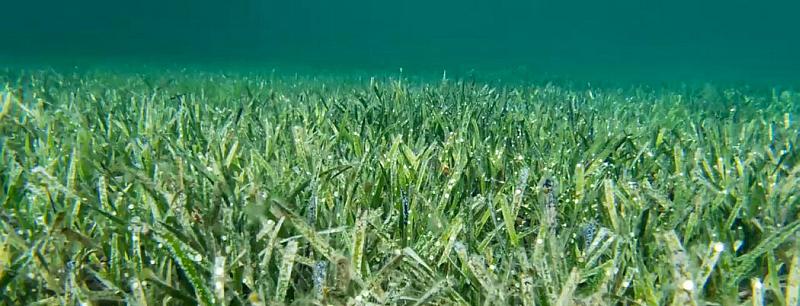 Australian researchers were performing a genetic survey of Poseidon’s ribbon weed (Posidonia australis), a species of seagrass growing widely in Shark Bay, off the westernmost tip of Australia. Researchers collected shoots from across the bay and examined 18,000 genetic markers to create a “fingerprint” from each sample. They had aimed to discover how many plants made up the meadow. When the DNA results came in, they made a remarkable discovery.
Australian researchers were performing a genetic survey of Poseidon’s ribbon weed (Posidonia australis), a species of seagrass growing widely in Shark Bay, off the westernmost tip of Australia. Researchers collected shoots from across the bay and examined 18,000 genetic markers to create a “fingerprint” from each sample. They had aimed to discover how many plants made up the meadow. When the DNA results came in, they made a remarkable discovery.
The seagrass, covering over 180km, an area three times the size of Manhattan, is, in fact, a single plant, having grown from a single seed over at least 4,500 years. The self-cloning plant is also the largest single plant in the world.
Jane Edgeloe, a University of Western Australia Ph.D. candidate and her colleagues published their results Wednesday in the journal Proceedings of the Royal Society B. It turned out the DNA of many of those seemingly different plants was virtually identical. Elizabeth Sinclair, also of the University of Western Australia and an author of the study, recalled excitement in the lab when she realized: “It’s only one plant.”
The New York Times reports that while some of Shark Bay’s northern meadows reproduce sexually, the rest of its Posidonia clones itself by creating new shoots that branch off from its root system. Even separate meadows were genetically identical, indicating that they were once connected by now-severed roots. Based on how old the bay is and how quickly seagrasses grow, the researchers surmise that the Shark Bay clone is about 4,500 years old.
In addition to being a clone, the grass seems to be a hybrid of two species and possesses two complete sets of chromosomes, a condition called polyploidy. While polyploidy can be lethal for animal embryos, it can be harmless or even helpful in plants. However, it can result in sterility: Much of the clonal grass does not flower and can only reproduce by continuing to clone itself.
This combination of extra genes and cloning might have been the key to the grass’s survival during a period of ancient climate change: Cloning made reproduction easier because the grass did not have to bother finding a mate. The extra genes could have given the seagrass “the ability to cope with a broad range of conditions, which is a great thing in climate change,” Dr. Sinclair said.
Today, it is arguably the world’s largest living organism. Utah’s Pando, a clonal colony of 40,000 aspen trees connected by their roots, is the reigning “largest individual plant,” covering an area bigger than 80 football fields. The Humongous Fungus is even bigger, weaving a web of mycelial tendrils underground and beneath tree bark across 3.5 square miles of Oregon’s Malheur National Forest. By comparison, the Shark Bay clonal seagrass is 77 square miles, about the size of Cincinnati.
Thanks to David Rye for contributing to this post.
